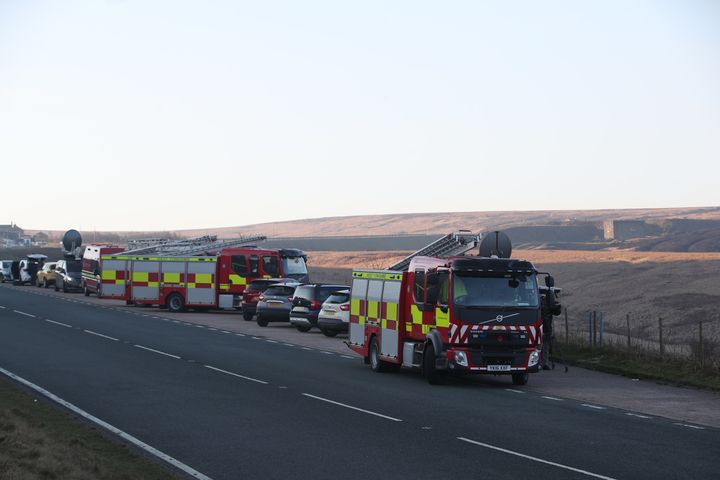Firefighters who tackled a large moorland blaze said the fire was highly unusual for February and a product of days of dry weather.
The smoke and flames on Marsden Moor, west of Huddersfield, could be seen for miles around as a kilometre-long front of flames spread across the hillside on Tuesday night after Britain saw its hottest winter day on record.
Station Commander Tony Pearson, from West Yorkshire Fire and Rescue Service, said moor fires in February were “very unusual but not unheard of”.
He said: “We’ve had a few dry days and it’s dried the land out a little bit.”

He described the location of the fire as “horrendous” as it took firefighters an hour to get there due to the terrain.
Pearson said: “It was really uneven ground, really difficult working conditions on there.
“At first light this morning there was a prime opportunity to get on top of the fire.
“When I arrived at first light, there was about a kilometre-long fire front behind us. It looked quite impressive, quite an intense fire.”

One expert said moorland fires in February are “quite normal”.
Thomas Smith, assistant professor in environmental geography at the London School of Economics (LSE), said: “This is the ‘muirburn’ season, when Natural England permit fires on moorlands, before a ban on burning around mid-April.
“Looking at the satellite image for Tuesday, there were plenty of well-managed fires burning across Northumberland and Highland moor sites.
“The situation at some sites (including in Saddleworth and Somerset) is that some fires have got out of control.
“The fires are occurring due to favourable weather conditions.
“It is not possible to attribute this short spell of warm, dry weather to climate change. However, these warm spells will become more likely with climate change, and so we should expect fire activity like we’ve seen this week to happen more frequently in future.”
Pearson said 35 to 40 firefighters were called to the incident at about 7pm on Tuesday.

He said operations stopped at midnight and started again at first light on Wednesday. The priority was stopping the fire spreading to a group of houses at the bottom of the hill.
Pearson said he had “no idea” what caused the blaze.
By mid-morning on Wednesday the blaze appeared to be out, leaving a large black swathe across the moorland, next to the A62 cross-Pennine route.
It came after firefighters had to tackle a large gorse blaze on Arthur’s Seat in Edinburgh.
Around 800 square metres of gorse was ablaze on Salisbury Crags, with the flames visible across the city.
Britain saw its hottest winter day on record on Tuesday when the mercury hit 21.2C (69.4F) in Kew Gardens, London.
